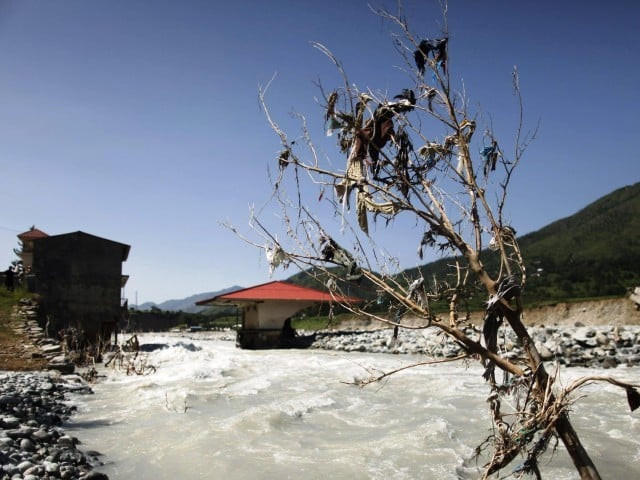Early drought warning helps farmers prepare for dry season
PMD had predicted no rains for crucial wheat-growing months of Nov, Dec

The hydrological regime change is directly impacting the inhabitants of mountainous regions in the form of frequent droughts and extreme floods," murad said. PHOTO: REUTERS
But this year, no wheat stalks are to be seen on his five acres of land in Rawat, a town some 19km from Islamabad. Instead, Bilal is growing onions, potatoes, cauliflower, cabbage and carrots.
Prolonged dry spell and food security
In late October, the Pakistan Meteorological Department (PMD) informed Bilal and other farmers that no rain was forecast for the crucial wheat-growing months of November and December in parts of northern Pakistan. The warning was aimed at helping farmers plan for crops more likely to survive drought. “As advised by the weatherman on the radio, I exercised caution and opted for vegetable cultivation, it being less water-intensive,” Bilal said.
Sleepless nights
Winter rains are usually reliable in this region – but already those who did not heed the weather forecast are regretting their decision.
Muhammad Khan spent around Rs200,000 on wheat seed which he finished sowing on November 7 on his family’s four-acre farm in Ghool village, about 90km southeast of Islamabad. His nights have been sleepless since he noticed the seeds growing abnormally slowly. The wheat plants were only three inches tall by November 21, rather than the 12 inches he would have expected.
“Even if rains come in January and February, the wheat output would be less than 50 per cent” of normal, because the grain heads will be underdeveloped, Khan predicted.
Slow growth makes the crop vulnerable in other ways too. Karaim Nawab, a wheat farmer in Gujar Khan, said if wheat doesn’t grow strongly enough to properly grip the soil, the plants are at risk of being flattened if there are heavy winds later in the season.
El Niño influence
Farmers usually finish sowing wheat by mid-November and, under normal circumstances, two rainy spells in November and December drench the fields, allowing the seeds to germinate. The harvest begins in April. This year, things are different.
Dry spell likely to trigger water shortages, PMD
PMD Director General Ghulam Rasul said the winter drought appears to be the result of an unusual high pressure zone over Central Asia that has driven rain clouds over northern Pakistan and beyond without letting rain fall. He says the drought is a consequence of the El Niño phenomenon, but that the effects are much harsher now than the last time the weather phenomenon affected Pakistan, in 2009.
The winter drought comes on the heels of a monsoon that receded in early September, almost three weeks earlier than expected.
Temperature extremes
Apart from holding back the onset of winter rains across Pakistan, El Niño is also causing large fluctuations between day and night-time temperatures, Rasul added.
Muhammad Tariq, director of the Rain-fed Agriculture Research Institute, said wheat requires temperatures of 21 to 25 degrees Celsius for effective germination. “This winter, during the peak wheat-sowing months of October and November, the temperature remained around 30 degrees,” he said.
The unusually high temperatures have forced farmers to delay wheat sowing in Islamabad and its suburban areas. “Although drought-tolerant wheat varieties have been introduced in the rain-fed areas, these varieties also need water,” Tariq said.
In Rawat, Bilal Khan is confident his vegetables will sell quickly when he takes them to market in February and March. He predicts he will make as much money as he would have from a wheat crop. “The forecast has been a big help as it has saved my investment of almost $3,000 going down the drain had I cultivated wheat this time,” he said.
Published in The Express Tribune, December 3rd, 2016.



















COMMENTS
Comments are moderated and generally will be posted if they are on-topic and not abusive.
For more information, please see our Comments FAQ